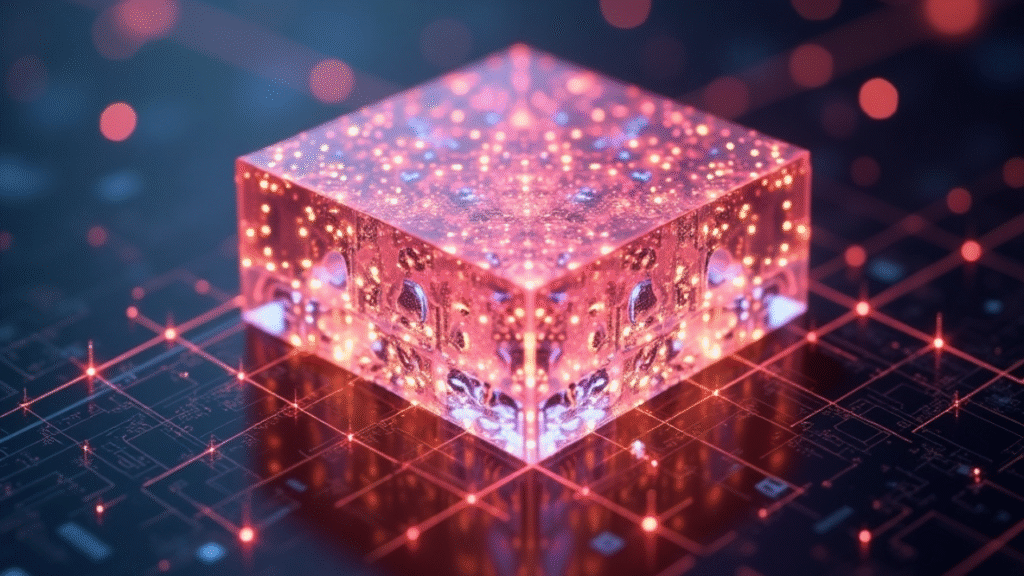Physics has always had a knack for surprising us. Just when we think we’ve pinned down the rules of reality, new discoveries remind us that the universe is far stranger than we imagined. Over the past decade, one of the most mind-bending breakthroughs has been the creation of time crystals—a bizarre new phase of matter that seems to defy the usual laws of physics. Alongside them, a growing family of exotic states of matter is challenging what we know about stability, order, and the quantum world.
So, what exactly are these strange quantum breakthroughs, and why are scientists so excited? Let’s dive in.
What are Time Crystals?
At first glance, the term “time crystal” sounds like something from science fiction. But in physics, it refers to a real, experimentally observed state of matter.
- Ordinary crystals (like diamonds or salt) are materials where atoms arrange themselves in repeating patterns in space.
- Time crystals are different: their atoms arrange themselves in repeating patterns in time, oscillating back and forth at regular intervals without using extra energy.
In other words, a time crystal is a system that never quite settles down—it keeps changing in a predictable rhythm forever, as though it’s “ticking” like a clock built into the fabric of matter itself.
This was once thought impossible because of the second law of thermodynamics, which says systems naturally drift toward disorder. Yet time crystals have shown that nature has loopholes.

How Were Time Crystals Discovered?
The idea was first proposed by Nobel laureate Frank Wilczek in 2012. He wondered: could there be crystals that repeat not just in space but in time?
The theory seemed radical, but within a few years, experiments proved him right. Using systems like:
- Trapped ions (atoms suspended in electromagnetic fields), and
- Superconducting qubits (the same technology used in quantum computers),
researchers demonstrated stable, time-repeating patterns. By 2017, multiple labs had confirmed the phenomenon, cementing time crystals as a brand-new phase of matter.
Why Do Time Crystals Matter?
Time crystals aren’t just scientific curiosities—they could have profound applications.
- Quantum Computing: Time crystals are remarkably stable against external disturbances, which makes them attractive for building more reliable quantum bits (qubits).
- New Physics: They expand our understanding of matter, showing that not all systems must obey the traditional rules of equilibrium.
- Technology of the Future: Although still experimental, time crystals might someday lead to ultra-precise quantum sensors or robust computing systems.
Exotic States of Matter: Beyond Time Crystals
Time crystals are part of a larger wave of discoveries in exotic states of matter. These are phases that don’t fit into the familiar categories of solids, liquids, gases, or even plasmas.
Some striking examples include:
- Bose–Einstein Condensates (BECs): Ultra-cold gases where particles behave as a single quantum wave.
- Topological Insulators: Materials that conduct electricity only on their surfaces, not through their bulk.
- Superfluids: Liquids that flow without friction, climbing walls and defying gravity.
- Anyons: Quasi-particles in 2D systems that don’t follow the usual rules of fermions or bosons, potentially useful for quantum computing.
Each of these states shows us that nature’s “menu” of possible matter is far richer than textbooks once suggested.

The Common Thread: Breaking Symmetries
What unites these breakthroughs is the idea of symmetry breaking.
- In crystals, spatial symmetry is broken because atoms prefer fixed repeating positions.
- In time crystals, time symmetry is broken because systems prefer to oscillate at fixed intervals instead of staying the same.
By studying how and why these symmetries break, scientists are uncovering entirely new principles of physics.
What’s Next for Quantum Breakthroughs?
The field of exotic matter is still young, and the possibilities are staggering. Some future directions include:
- Quantum Technologies: Using exotic phases to build better quantum computers, sensors, and communication systems.
- Fundamental Physics: Testing whether exotic states can reveal deeper truths about the universe’s structure.
- Materials Science: Engineering new materials with properties we can’t yet imagine.
Just as semiconductors once revolutionized the 20th century, exotic matter may power the technologies of the 21st.

Conclusion: A Glimpse into the Quantum Future
From time crystals that beat like perpetual clocks to superfluids that defy intuition, exotic states of matter remind us that the universe is far more creative than we are. These breakthroughs aren’t just quirky lab results—they could redefine the foundations of technology, energy, and information.
The quantum revolution is still unfolding, and time crystals are a shining example of how imagination, theory, and experiment can collide to open new frontiers.
The next time you hear the phrase “exotic states of matter,” remember—it’s not just physics jargon. It’s a window into a stranger, more fascinating universe than we ever dared to expect.








